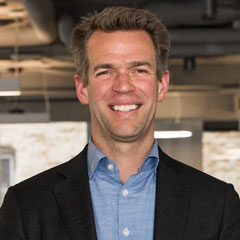Urmi Sengupta, MacArthur Foundation, Chris Jurgens, Omidyar Network, and Adam Connaker, The Rockefeller Foundation write about the ambitions of the Catalytic Capital Consortium Grantmaking initiative.
Today, we are excited to announce 14 new awardees of the Catalytic Capital Consortium (C3) Grantmaking initiative. Selected from a robust pool of research proposals submitted in response to the open call we issued last fall, all of the projects will help strengthen the evidence base for catalytic capital.
We are making these awards because we believe that research assessing past use of catalytic capital is essential to making today’s investment of catalytic capital more effective, efficient, and widespread. Concrete, rigorous data and analyses can generate vital insights, support market growth, and fuel progress on the UN Sustainable Development Goals and other critical social and environmental objectives.
The Catalytic Capital Consortium is a collaborative initiative created and led by the MacArthur Foundation, The Rockefeller Foundation, and Omidyar Network to advance the understanding, use, and effectiveness of catalytic capital as a means of achieving greater impact worldwide. Together, the three partners jointly fund the three-year, $10 million C3 Grantmaking program, which is housed at and administered by the New Venture Fund. In addition, on MacArthur’s C3 strategy page, you can read more about their investments to advance the C3 initiative.
The 87 responses to our call for proposals point to the immense global importance of catalytic capital in helping build a more just, inclusive, and resilient world. They demonstrate widespread interest in understanding how best to accelerate the flow of this patient, flexible, risk-taking financing, while also offering insights on the field as a whole.
Uses for catalytic capital are broad, creative, and diverse.
The grant proposals illustrate the breadth of organizations, institutions, and individuals that are working to drive a deeper understanding of catalytic capital and the diverse ways that it has been used.
We received submissions from 17 countries requesting more than $16 million in funding, with proposals led by nonprofits, universities, investment advisors, foundations, and think tanks. Some were focused on analyzing the use of catalytic capital to address specific challenges—like infant and maternal health in communities of color or off-grid solar in developing markets.
Others wanted to evaluate the efficacy of particular investment tools, like social impact bonds or unique blended finance structures. Still others aimed to explore the contributions of catalytic capital provided by different investor groups, such as the public sector, high net worth individuals, and the corporate sector.
We can leverage deep experience with catalytic capital to advance nascent sectors.
Catalytic capital is not new. It has a long track record in some geographies and sectors. The challenge now is leveraging and transferring existing experience to sectors where catalytic capital has not been widely available.
For example, we received proposals analyzing the impact of Community Development Financial Institutions on economic opportunity in the United States. Others proposed to study catalytic capital’s effects in advancing smallholder agriculture and entrepreneurship in developing markets. Insights on how these initiatives grew can inform how we expand newer markets.
Other proposals focused on high-impact sectors where financing has been limited, in an attempt to articulate the underlying capital gaps and engage catalytic capital providers to help grow deployment. These included a number of proposals focused on innovative global health technology, the incubation and development of cooperatives, regenerative agriculture strategies, and creative affordable housing models, including an analysis of investments that have supported the development of informal settlements.
Evidence-based strategies are critical to market expansion.
We know that a great deal of social and environmental progress stalls because underlying capital gaps constrain progress. But often that information is anecdotal, seen through the lens of one organization’s experience or isolated surveys.
Mobilizing catalytic capital in targeted sectors can lead to significant changes at multiple levels, culminating in social and environmental benefits for underserved communities. For example, several research projects supported by the C3 Grantmaking program are focused on three sectors with a tremendous potential to help people globally: small- and medium-sized enterprises, smallholder agriculture, and artisans. Small- and medium-sized enterprises represent about 90 percent of businesses and more than 50 percent of employment worldwide. An estimated 2 billion people globally depend on smallholder agriculture for income. And the artisan sector is expected to grow to $1 trillion in revenue by 2023. In India alone, 200 million people are connected to handicraft production.
We saw in our early C3 strategy research that market and investment analyses enable investors to make thoughtful, strategic decisions about how to pursue catalytic opportunities that align with their financial and impact objectives. Many of the grant proposals reinforced this idea–that concrete information and evidence on capital gaps, intervention models, and tangible results can influence significant action by investors. We urge investors to incorporate the evidence and insights that these projects generate into their investment strategies and deployment and to act in ways that accelerate impact.
We are eager to build on these efforts around catalytic capital to help the global impact investing community move toward the realization of its full potential for delivering positive, lasting change. We look forward to sharing more from the C3 initiative and our awardees in the months to come, and we welcome the opportunity to engage with all those, like us, who are interested in increasing the use of catalytic capital.
This piece was originally published on the Impact Alpha website.






